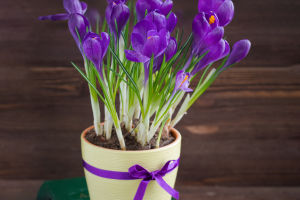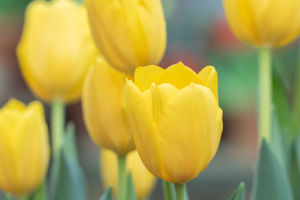Hyacinths
Hyacinths are a popular choice for flower enthusiasts, cherished for their ornamental beauty and delightful fragrance.
These colorful blooms can brighten up any indoor or outdoor space, adding a touch of elegance and charm to your surroundings.
However, when it comes to indoor placement, several factors must be considered to ensure optimal growth and enjoyment of these beloved flowers.
Firstly, it's essential to address the suitability of hyacinths for indoor environments, particularly in spaces like bedrooms and study rooms. While hyacinths are undoubtedly beautiful and fragrant, they may not be the best choice for these areas due to their strong scent and potential impact on air quality.
In bedrooms, where windows are often tightly shut at night, the fragrance emitted by hyacinths can accumulate and affect air circulation, potentially leading to discomfort or disrupted sleep patterns. Additionally, the release of ketone substances from the flowers, while not toxic, may increase the body's metabolic burden over time, posing health concerns for sensitive individuals.
Similarly, placing hyacinths in study rooms, where people spend extended periods engaged in mental activities, may also have drawbacks. While the initial refreshing scent of the flowers may aid concentration and mood, prolonged exposure to their pungent odor could become overwhelming and tiresome, ultimately hindering productivity and well-being.
Instead, the living room emerges as the ideal setting for showcasing hyacinths. Positioned near the entrance door, the living room benefits from high air circulation, allowing the fragrance of the flowers to dissipate quickly without overwhelming the senses.
Placing hyacinths in the living room creates a welcoming atmosphere for guests, who can appreciate the beauty and scent of the flowers upon arrival.
For those fortunate enough to have a warm balcony, it is another excellent location for growing hyacinths. With ample sunlight and fresh air, balconies provide an ideal environment for these flowers to thrive.
However, taking precautions to protect hyacinths from extreme temperatures is essential, especially during winter and summer. Adequate shading in summer prevents the flowers from wilting in the scorching sun, while winter care ensures their survival through colder months.
While the fragrance of hyacinths is generally non-toxic and refreshing, it's crucial to be mindful of potential allergies, especially pollen. Individuals prone to skin allergies should handle hyacinths with care to avoid irritation.
While it may be tempting to bury one's nose in the fragrant blooms, it's advisable to exercise caution, as direct inhalation of pollen can trigger allergic reactions.
Hyacinths are exquisite flowers that add beauty and fragrance to any home. You can enjoy these delightful blooms without any adverse effects by carefully considering their placement and taking necessary precautions. Whether adorning your living room or gracing your balcony, hyacinths will bring joy and charm to your home environment.
It's worth noting that while hyacinths are generally low-maintenance plants, they do require some attention to ensure their well-being. Regular watering and proper soil drainage are essential to prevent waterlogging, which can lead to root rot.
Periodic fertilization during the growing season can promote healthy growth and vibrant blooms.


